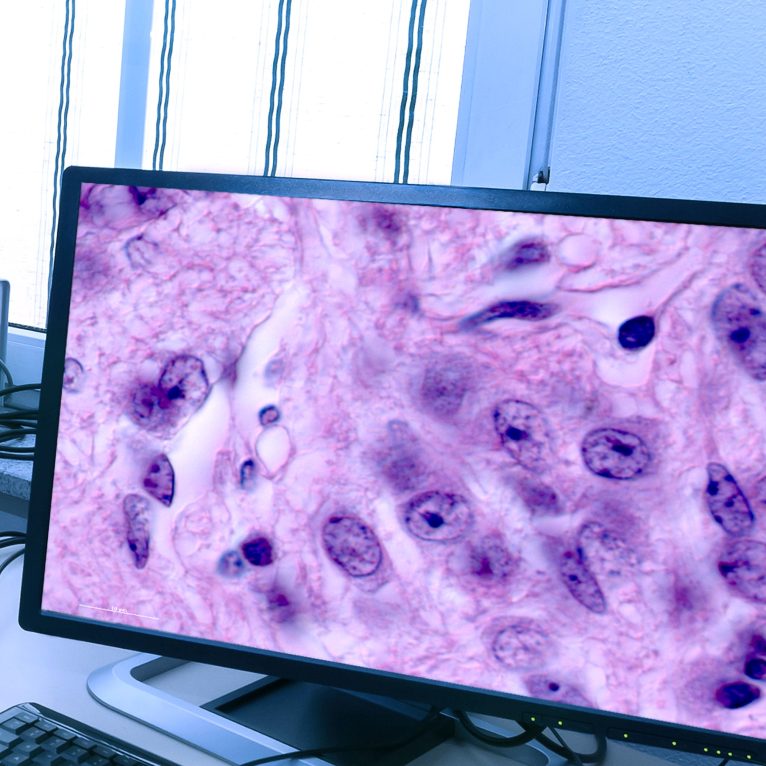
Written by

15th July 2021 (Cranfield, UK) The launch of NVIDIA’s Cambridge-1 Supercomputer signals a bullish outlook from the firm for the future development of the AI in healthcare market. Cambridge-1’s list of potential applications ranges across healthcare domains, with partnerships geared towards medical imaging, genomics and drug development.
NVIDIA announced the completion of its latest project in the UK last Wednesday, to considerable interest and fanfare from its investors.
Beginning development in October last year the project certainly surprised many who often know that development in these areas usually takes years and not months. Talking to NVIDIA’s own Craig Rhodes, the company’s EMEA Industry Lead for AI Healthcare and Life Sciences, it was made clear quickly that the technology company’s aspirations lie far beyond a speedy route to market.
Together with founding partners AstraZeneca, GSK, Guy’s and St Thomas’ NHS Foundation Trust, King’s College London and Oxford Nanopore, the company will begin a series of projects aimed at improving the delivery of healthcare across a range of domains.
In this article Signify Research details how it expects this development to benefit both NVIDIA’s customers and the wider healthcare technology ecosystem.

Faster, Better and Ultimately, Less Costly
The NVIDIA DGX SuperPOD system is reportedly ranked No. 41 on the latest TOP500 list of the world’s most powerful supercomputers, making it the most powerful present in the UK today.
In real terms, this means that any computation conducted on the system will ultimately be able to be performed much quicker than previous iterations, with one partner citing the ability to derive insights in seconds, not days and weeks. This massive compute power offers opportunity.
Cambridge-1 Creates Foundation for New Hub of Co-development
The location of Cambridge-1 in the UK is also strategic. NVIDIA chose the UK healthcare market, as it is uniquely placed to foster collaboration with pharmaceutical companies, research institutes and clinical organisations to maximise value. The UK has some of the largest and richest data sets in the NHS and UK biobank and is already a leading hub AI application development in healthcare. This was also evident in our recent AI in Drug Development and Clinical Trials, and Digital Pathology market reports, with strong projected growth for AI applications across the UK. Whilst inevitably attracting talent and signalling a strong path ahead for domestic vendors, there is also no reason for the supercomputer’s insights to be limited to UK-based innovation.
The importance of NVIDIA’s partnership strategy within the UK market is however evident in the initial examples cited on launch.
For example, the initial Cambridge-1 partnership with AstraZeneca, is focused on use whole slide digital pathology images for drug development.
Whole slide images are large, much larger than radiology images, often being 1 gigabyte in size or more. Processing and annotating these images at full resolution can therefore be an arduous and manual task. By applying computation using Cambridge-1, AstraZeneca is hoping to both increase the speed of its analysis, and ultimately find interesting biomarkers, thus candidates for drug development, much more quickly.
Considering the average time for a drug to progress past preclinical testing currently takes on average 5.5 years[1] ,pharmaceutical companies are hoping to leverage Cambridge-1 and other technology innovations to drastically reduce the time and cost associated with development.
However, Cambridge-1 does not only offer advantages to pharmaceutical giants. NVIDIA has a thriving start-up accelerator which it uses to nurture talent and accelerate development. Considering the time it takes for any AI start-up to develop a solution and launch commercially, the prospect of utilising Cambridge-1 should allow start-ups to develop and deploying algorithms much more quickly than anticipated.
Instead of at least two to three years working on finetuning algorithms and compiling evidence, entrepreneurs will now be able to turn their attentions more quickly to real-world deployment.
Barriers to Adoption
NVIDIA’s investment in Cambridge-1 and partnerships with life-science giants and start-ups also looks to tackle two of the biggest challenges facing the industry.
1. Lack of Talent
Lack of AI talent availability is commonly cited as a barrier for industry participants. As part of the Cambridge-1 program, NVIDIA’s own data management and engineering teams will be integrated within its partnerships, helping partners make the most of their technology, whilst developing their own products more closely with customers.
Whilst NVIDIA’s own expertise can only reach so far, the company has cited this as an area for further development and investment. NVIDIA’s accelerator currently comprises ~600 unique start-ups, but only the top 10-20% are currently “actively managed”. In future, this number is expected to expand further.
By acting as a point of contact between these organisations, NVIDIA can help to facilitate lucrative partnerships and bring the most promising innovators past initial barriers to present solutions where they will be most valued.
2. Availability of Quality Data
Ask any AI entrepreneur what the biggest challenge they face in development is and most will cite data availability and quality. Whether its curating data that can be structured and used easily, or simply finding the appropriate sources to use, a key challenge in the market lies in the fact that there is often not enough data.
Cambridge-1 is looking to solve this issue for its partners, leveraging its massive computational power to generate large synthetic datasets for research and algorithm development. While this is a longer-term ambition, the research “hub” that Cambridge-1 is creating will offer more opportunity for data aggregation and partnerships in the wider research community also.
An example of this ambition is evident in one of the early development partnerships for Cambridge-1.
By partnering with King’s College London and Guy’s and St Thomas’ NHS Foundation Trusts, Cambridge-1 is being used to teach AI models to generate synthetic brain images by learning from previous MRI brain scans from the UK Biobank and NHS. The goal is to use this synthetic data model to gain a better understanding of diseases like dementia, stroke, brain cancer and multiple sclerosis and enable earlier diagnosis and treatment and to share the new synthetic brain MRI data set with the wider research and development community.
The implications of this could result in the multiplication of data for rare and poorly understood diseases that currently suffer from a lack of data available to study.
Where to Next?
NVIDIA has also signalled an intention to begin working with other supercomputers around the world to move research across markets. This will inevitably help to accelerate insights as they are made, whilst allowing research into specific populations to flourish.
NVIDIA’s initial focus in healthcare was on imaging in radiology, the company is now beginning to move more and more towards working with complex datasets that can support provision of future personalised medicine.
The establishment of Cambridge-1 is also not purely a flagship technical exercise; whilst the specifications and speed at which it has been developed is impressive, its role as a central foundation for developing a broader collaborative research partnership ecosystem in the UK could be far more profound, providing the tools and support to enable healthcare researchers, start-ups and lifescience giants access to world-leading technology.
Providing the resources and technical expertise overcomes just some of the barriers to more widespread adoption of AI in healthcare. However, real-world application is a complex and slow-moving process, with ethics, legislation, funding and integration challenges making adoption an arduous long-term process.
There is no doubt that NVIDIA and Cambridge-1 will support a faster route for new AI-based innovation – whether the market is ready for it in the near-future is much less clear.
Signify Research is a UK-based Market Intelligence Firm specialising in healthcare technologies.
If you would like to know more about our services, or would be interested in engaging with us in our ongoing research, please contact Imogen.Fitt@signifyresearch.net
[1] https://www.gsk.com/en-gb/research-and-development/development/how-we-develop-new-medicines/

